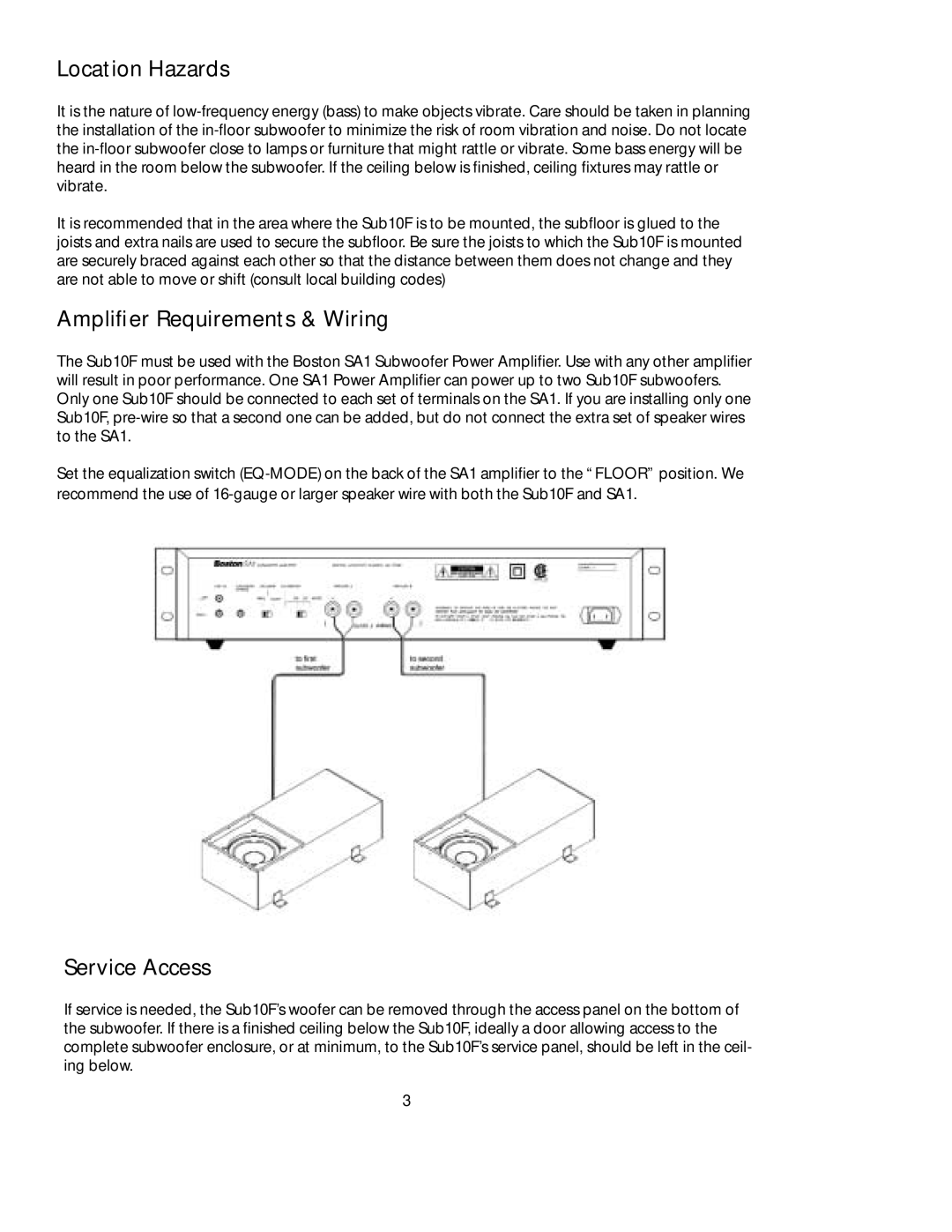
Location Hazards
It is the nature of
It is recommended that in the area where the Sub10F is to be mounted, the subfloor is glued to the joists and extra nails are used to secure the subfloor. Be sure the joists to which the Sub10F is mounted are securely braced against each other so that the distance between them does not change and they are not able to move or shift (consult local building codes)
Amplifier Requirements & Wiring
The Sub10F must be used with the Boston SA1 Subwoofer Power Amplifier. Use with any other amplifier will result in poor performance. One SA1 Power Amplifier can power up to two Sub10F subwoofers. Only one Sub10F should be connected to each set of terminals on the SA1. If you are installing only one Sub10F,
Set the equalization switch
Service Access
If service is needed, the Sub10F’s woofer can be removed through the access panel on the bottom of the subwoofer. If there is a finished ceiling below the Sub10F, ideally a door allowing access to the complete subwoofer enclosure, or at minimum, to the Sub10F’s service panel, should be left in the ceil- ing below.
3
